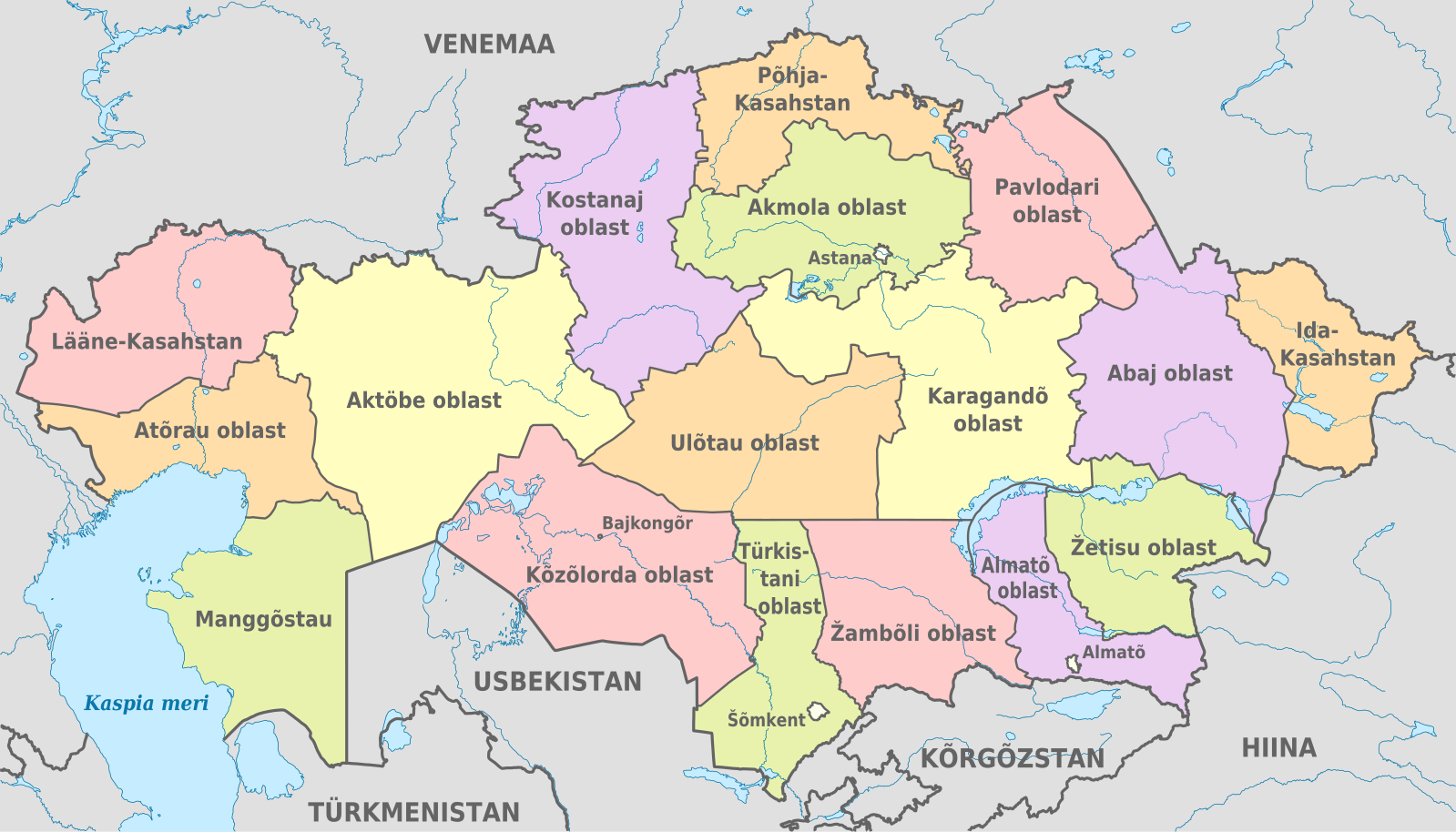Kazakhstan
From Wikipedia, the free encyclopedia
"Qazaqstan" redirects here. For the Kazakh state television broadcaster, see.
Kazakhstan, officially the Republic of Kazakhstan, is a country in Central Asia with a land area of 2,724,900 square kilometres (1,052,100 sq mi); it has borders with Russia in the north, China in the east, and Kyrgyzstan, Uzbekistan, and Turkmenistan in the south. The capital is Nur-Sultan, formerly known as Astana. It was moved from Almaty, the country's largest city, in 1997. Kazakhstan is the world's largest landlocked country, and the ninth-largest in the world. It has a population of 18.8 million, and one of the lowest population densities in the world, at fewer than 6 people per square kilometre (15 people per sq mi).
The territory of Kazakhstan has historically been inhabited by nomadic groups and empires. In antiquity, the nomadic Scythians inhabited the land and the Persian Achaemenid Empire expanded towards the southern territory of the modern country. Turkic nomads, who trace their ancestry to many Turkic states such as the First and Second Turkic Khaganates, have inhabited the country throughout its history. In the 13th century, the territory was subjugated by the Mongol Empire under Genghis Khan. By the 16th century, the Kazakhs emerged as a distinct group, divided into three jüz. The Russians began advancing into the Kazakh steppe in the 18th century, and by the mid-19th century, they nominally ruled all of Kazakhstan as part of the Russian Empire. Following the 1917 Russian Revolution, and subsequent civil war, the territory of Kazakhstan was reorganised several times. In 1936, it was made the Kazakh Soviet Socialist Republic, part of the Soviet Union. Kazakhstan was the last of the Soviet republics to declare independence during the dissolution of the Soviet Union in 1991. Human rights organisations have described the Kazakh government as authoritarian, and regularly describe Kazakhstan's human rights situation as poor.
Contents |
|---|
|
|
Etymology
The name "Kazakh" comes from the ancient Turkic word qaz, "to wander", reflecting the Kazakhs' nomadic culture.[16] The term "Cossack" is of the same origin.[16] The Persian suffix -stan means "land" or "place of", so Kazakhstan can be literally translated as "land of the wanderers".
Though the term traditionally referred to only ethnic Kazakhs , including those living in China, Russia, Turkey, Uzbekistan and other neighbouring countries, the term Kazakh is increasingly being used to refer to any inhabitant of Kazakhstan, including non-Kazakhs
History
Kazakhstan has been inhabited since the Paleolithic era.Pastoralism developed during the Neolithic, as the region's climate and terrain are best suited for a nomadic lifestyle.
The Kazakh territory was a key constituent of the Eurasian trading Steppe Route, the ancestor of the terrestrial Silk Roads. Archaeologists believe that humans first domesticated the horse (i.e., ponies) in the region's vast steppes. During recent prehistoric times, Central Asia was inhabited by groups such as the possibly Proto-Indo-European Afanasievo culture, later early Indo-Iranians cultures such as Andronovo, and later Indo-Iranians such as the Saka and Massagetae. Other groups included the nomadic Scythians and the Persian Achaemenid Empire in the southern territory of the modern country. In 329 BC, Alexander the Great and his Macedonian army fought in the Battle of Jaxartes against the Scythians along the Jaxartes River, now known as the Syr Darya along the southern border of modern Kazakhstan.
Cuman-Kipchak and Golden Horde
The Cuman entered the steppes of modern-day Kazakhstan around the early 11th century, where they later joined with the Kipchak and established the vast Cuman-Kipchak confederation. While ancient cities Taraz (Aulie-Ata) and Hazrat-e Turkestan had long served as important way-stations along the Silk Road connecting Asia and Europe, true political consolidation began only with the Mongol rule of the early 13th century. Under the Mongol Empire, first strictly structured administrative districts (Ulus) were established.
Geography
Climate
Kazakhstan has an "extreme" continental climate, with warm summers and very cold winters. Indeed, Nursultan is the second coldest capital city in the world after Ulaanbaatar. Precipitation varies between arid and semi-arid conditions, the winter being particularly dry.
| Location | July(°C) | July(F) | January(°C) | January(°F) |
|---|---|---|---|---|
| Almaty | 30/18 | 86/64 | 0/−8 | 33/17 |
| Shymkent | 32/17 | 91/66 | 4/−4 | 39/23 |
| Karaganda | 27/14 | 80/57 | −8/−17 | 16/1 |
| Nursultan | 27/15 | 80/59 | −10/−18 | 14/−1 |
| Pavlodar | 28/15 | 82/59 | −11/−20 | 12/−5 |
| Aktobe | 30/15 | 86/61 | −8/−16 | 17/2 |



